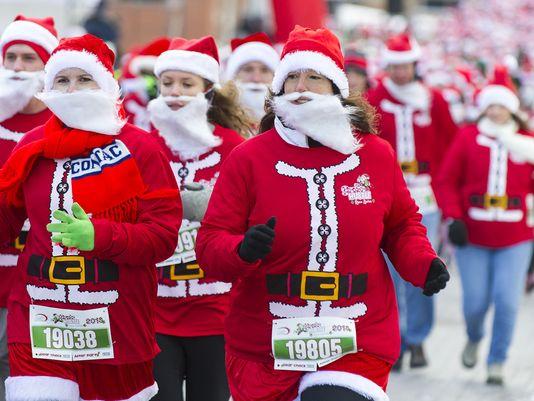
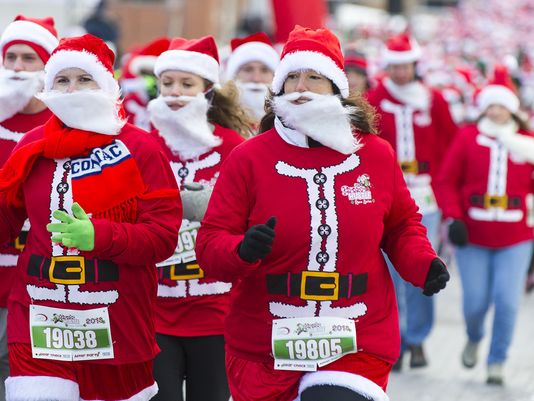
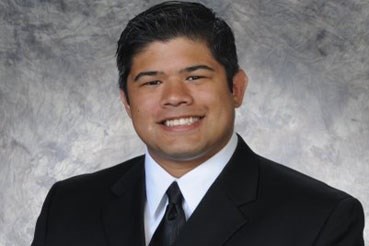
The Santa Hustle is a 5K (and often a half marathon as well) presently offered in nine locations around the United States. The event, run by Adrenaline Sports Management, is in its sixth year and has a seasonal theme, with festive music, holiday decorations, live reindeer, giant Christmas-themed inflatable structures and thousands of runners dressed like Santa (the clothing is part of the swag for each participant.) The event, offered in the six weeks leading up to Christmas, registers between 2,000 and 8,500 participants in each city, resulting in an economic impact ranging from $1.2 million to $5.6 million, depending upon location.
This year’s locations included Chicago, Illinois (the founding city of the race), Sevierville, Tennessee; Indianapolis, Indiana; Sandusky, Ohio; Milwaukee, Wisconsin; Galveston, Texas; South Portland, Maine; Glendale, Arizona; Newport, Rhode Island – even a virtual race, in which people can register, receive materials and run (and receive a medal.) For this, the organizers note:” Santa Claus is an incredible man but unfortunately, he can’t be everywhere at once. However, he does want you to be a part of the jolliest race series of the year! So why not run virtually? A virtual Santa Hustle run can be 3.1 or 13.1 miles, your choice of location, any duration of time, during the designated dates of November 20 through December 20. Run by yourself or with a group, just get out and have a fun time.”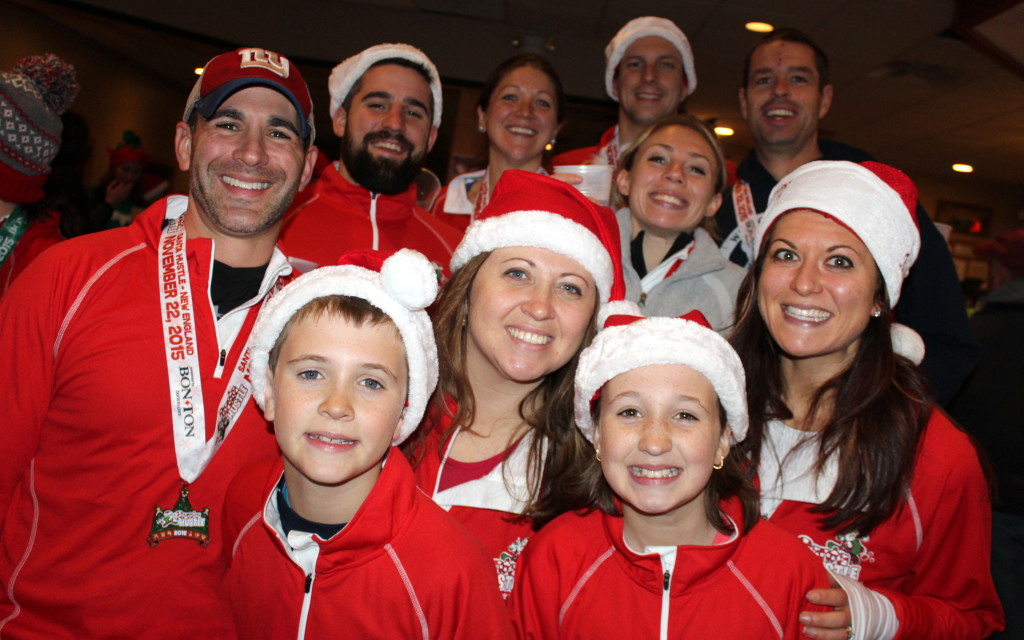
Sports Destination Management: For an event that has been around a relatively short time, the Santa Hustle has grown tremendously. Do you attribute that to anything in particular?
Aaron DelMar: It’s a fun event – way more of a fun run than a competitive event for sure. You have people who want to race, but most are just there to be with their families and friends.
SDM: Visually, it’s a great race, and that plays into media coverage.
DelMar: Everyone who registers gets a dry-fit long sleeve hoodie, a Santa beard and a hat. Then everyone who finishes gets a finisher medal. It really is a winter wonderland. We line up anywhere between 2,000 and 8,000 Santas at the line, and then we start our race. It’s just this giant parade of Santas, and of course the media loves that – and so does everyone watching.
SDM: It must be incredibly photogenic – and social media-friendly as well.
DelMar: It is! Our Facebook page always has a lot of photos. Sometimes, I will reverse-Google us and see what people are posting and saying. There are some really great images other people have posted, and I’ve also had a really good experience with looking on YouTube. People wear GoPros and they highlight clips of their run. Those are all the kind of things that help our event out.
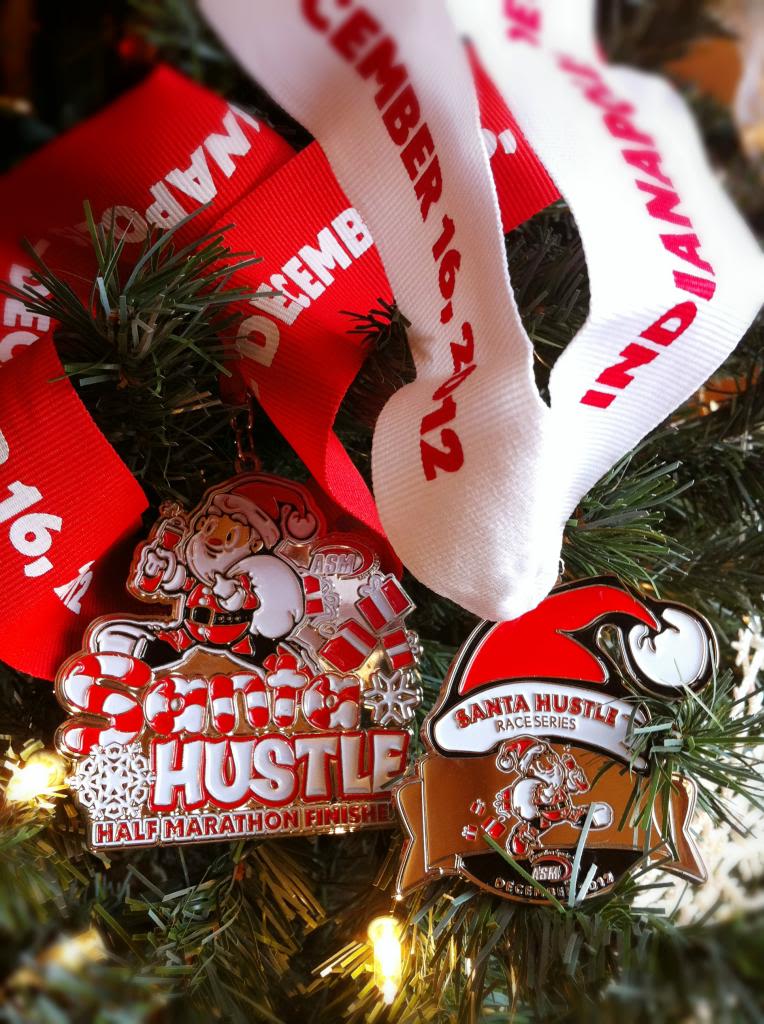 SDM: It’s a big event. What kind of volunteer support does it take to pull it off in each city?
SDM: It’s a big event. What kind of volunteer support does it take to pull it off in each city?
DelMar: Well – let’s just say Santa needs elves. Depending on our location, we have between 150 and 300 volunteers dressed as elves – the hats, the outfits, everything. They are staffing the cookie stations, hot chocolate stations, candy cane stations – they’re helping out.
SDM: What do you estimate your participation demographic to be?
DelMar: It’s about 76 percent female and 24 percent male. There’s children’s participation too.
SDM: Is it competitive?
DelMar: There's a small group of competitive runners, and for those people, we’ll provide that experience, with age group awards and so forth. Everything is chip-timed.
SDM: Your economic impact is excellent. What do you attribute that to?
DelMar: Our business model is called the three strings. We like to say the first is shoe strings. We put on a well-run and efficient event that takes place in safe manner and includes road closures and a clearly-marked course. We want everyone from start to finish to have a good experience. The second is called heart strings. Each race supports a charity that is a good cause. That means the race has a social benefit and people can participate knowing it’s not just fun, but they’re going to behelping others. The third component is called purse strings – every participant gets value for their registration fee; they see a lot of value in their registration. So, for example, for a $40 5K race you’re getting a premium hoodie, hat, beard, cookies and hot chocolate – everything that makes it fun.
SDM: You mentioned heart strings and a cause. What is an example of that?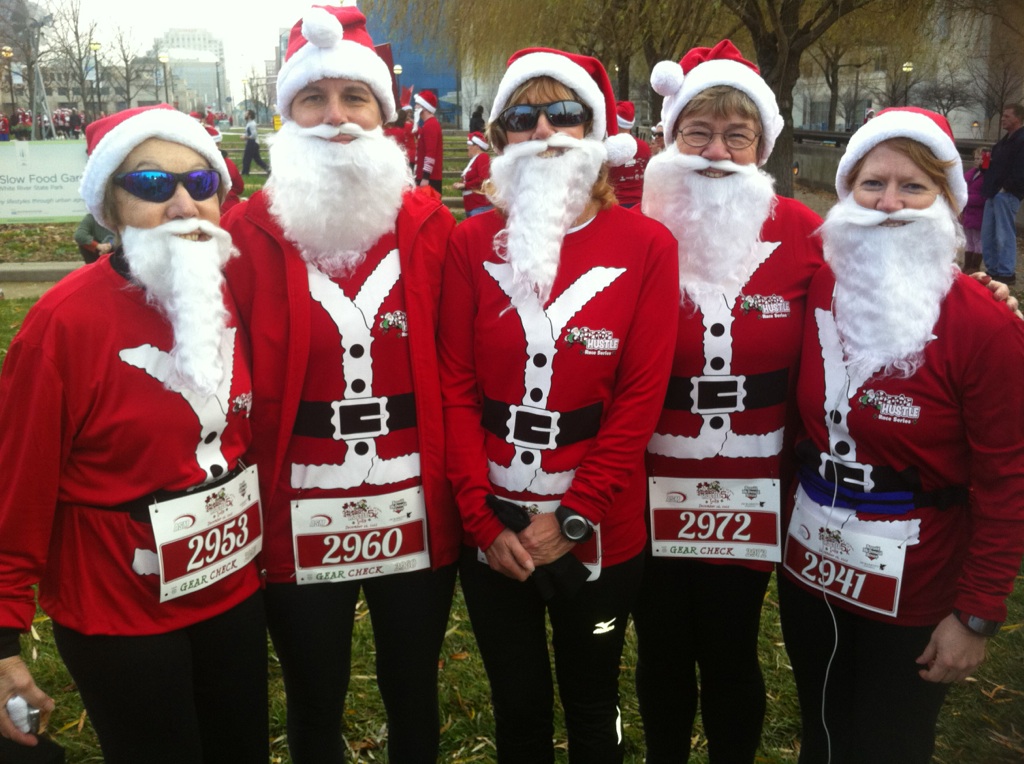
DelMar: In Chicago, the race benefits Girls On The Run, which is a non-profit organization that inspires girls to be active. In the races there, we’re comping the registration of every Girls On The Run participant in an effort to encourage them to keep running. It makes a really strong social sense to do it, since girls who run when they’re young are likely to grow up to be runners later in life.
SDM: What are you looking for when you seek out cities to host the Santa Hustle?
DelMar: We’ve an expansion race, so we’re looking to develop new partnerships. We like to find a community that wants us. We’re a big race, and we want to find a home in a city where the event doesn’t drive people crazy.
SDM: Bg races always call for a strong partnership between the city and the CVB.
DelMar: They are, so we look for a CVB with very low turnover. We want to develop relationships, and we want to work with the same people each year. Having highly trained professionals in the area really makes every event so much better. We’re not an event that travels around, so we’re looking to find places we can come back to year after year. We love it when we hear events say, “We’re not booking anything here on that weekend because that is the Santa Hustle and it’ll be really busy.”
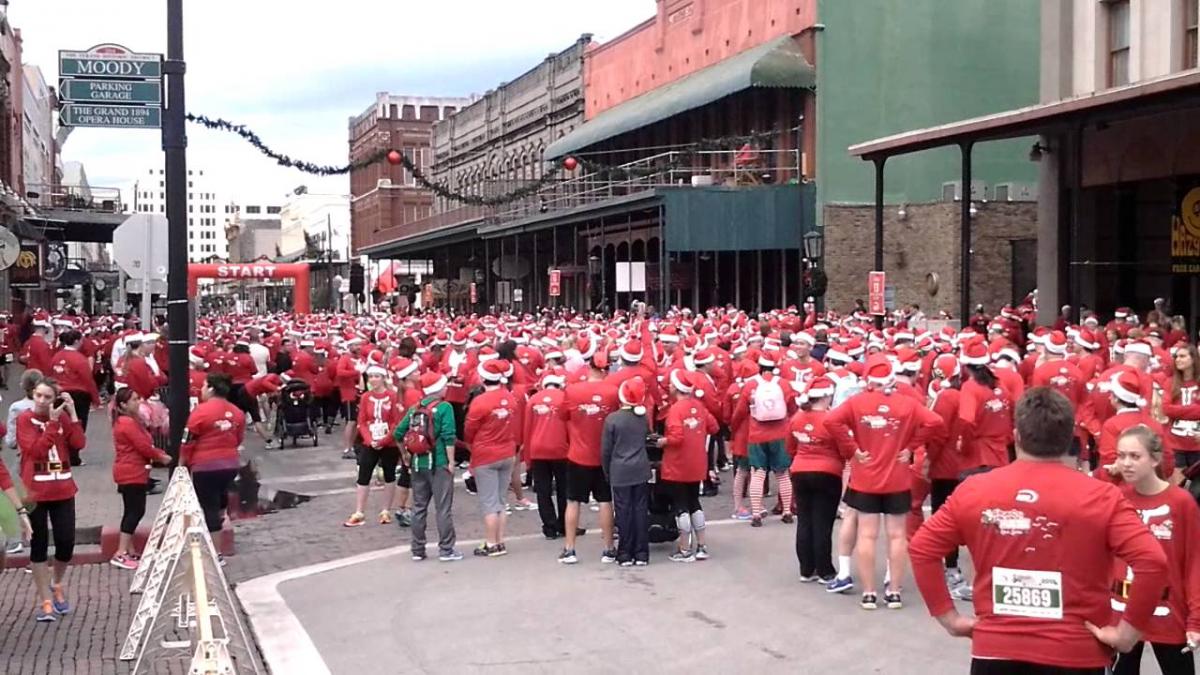 SDM: We spoke earlier about the demographics of the race; do you see people signing up as individuals, or more as groups?
SDM: We spoke earlier about the demographics of the race; do you see people signing up as individuals, or more as groups?
DelMar: It’s more of a group event. That’s what helps our event take out; we did a survey and we found that for every one person who registers, 2.3 to 2.6 other people register. It can be a family or co-workers or a group of friends, but it’s definitely a group. This is not a marathon where one person registers and another person – or even a few people – come and watch them. This is something people do together. It’s why it’s so successful.

